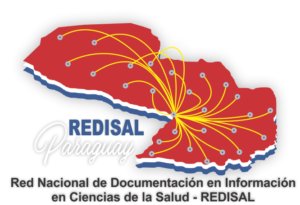Detección neonatal en el Paraguay. brechas para su cobertura universal
Neonatal screening in Paraguay. gaps for universalcoverage
Mem. Inst. Invest. Cienc. Salud (Impr.); 13 (2), 2015
Año de publicación: 2015
La cobertura universal en los programas de detección neonatal (DN) es una obligación de todos los países, de manera a ofrecer a la población los servicios de detección y tra-tamiento oportunos sin necesidad de que la misma incurra en gastos considerables ni pago directo al momento de recibir el servicio. El objetivo de este estudio fue determinar las brechas para la universalización de la cobertura de la DN en Paraguay. La unidad de análisis fue el Programa de Prevención de la Fibrosis Quística y Retardo Mental (PPFQRM). Se evaluaron los tres ejes de la cobertura universal sanitaria (CUS) propues-to por la OMS: amplitud o proporción cubierta, profundidad definida por el número de patologías incluidas en la DN, nivel de protección financiera; así como las brechas para el logro de la universalización de la cobertura de la DN. La información se obtuvo del PPFQRM, Dirección General de Estadísticas Vitales y de la Dirección General de Estadísti-ca, Encuesta y Censo. Se encontró que los estudios de diagnóstico y tratamiento están garantizados por la Ley 2138/2003. La amplitud tuvo un aumento significativo de 0,8% en 1999 a 76,1% en 2014. Existe necesidad de ampliar las patologías incluidas en la DN en el PPFQRM (hipotiroidismo congénito, fenilcetonuria y fibrosis quística). Se pudo comprobar los grandes esfuerzos e inversiones que el Paraguay está realizando para el logro de la universalización de la DN; con lo cual se contribuirá a romper el círculo de pobreza, considerando que la discapacidad genera pobreza y la pobreza discapacidad.
Universal coverage in neonatal screening (NS) programs is an obligation of all countries,providing the population screening services and treatment without the populationincurring considerable expenses or direct payment at the time of the service. The objectiveof this descriptive cross-sectional study was to determine the gaps in universal coverageof NS in Paraguay. The unit of analysis was the Program for Prevention of CysticFibrosis (PPFQRM). The three axes of universal health coverage (UHC) proposed by WHOwere evaluated: amplitude or proportion of the population covered, depth or pathologiesincluded in the ND, and financial protection level in addition to the gaps to achieve universalcoverage of the program. Data were extracted from the PPFQRM database, Departmentof Vital Statistics and the General Direction of Statistics, Surveys and Census.It was found that both the diagnostic studies and treatment are guaranteed by the Law2138/2003. The amplitude had a significant increase of 0.8% in 1999 to 76.1% in 2014. There is a need to ample the pathologies included (primary congenital hypothyroidism, phenylketonuria, cystic fibrosis) in the NS of the PPFQRM. It was found that Paraguay ismaking great efforts and investments towards achieving universal coverage in the NS.Achieving universal NS will contribute to break the cycle of poverty considering that disabilitycauses poverty and disability poverty.


